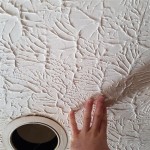What To Do With Old Ceiling Tiles in the Atlanta, GA Area
The disposal of old ceiling tiles in the Atlanta, GA area presents a challenge due to the environmental regulations and potential health hazards associated with specific types of tiles. Understanding the composition of the tiles, local disposal options, and any applicable regulations is crucial for responsible and compliant disposal. This article outlines the key considerations for handling old ceiling tiles in Atlanta, providing insights into identification, disposal methods, and potential reuse opportunities.
Ceiling tiles, commonly used in commercial and residential buildings throughout Atlanta, can vary significantly in material composition. The date of installation is a primary factor determining the potential presence of hazardous materials. Tiles installed before the 1980s are more likely to contain asbestos, a known carcinogen. Asbestos was frequently used in building materials for its fire-resistant properties. Newer tiles are typically made from mineral fiber, fiberglass, or other composite materials. Proper identification of the tile type is the first step in determining the appropriate disposal method.
Visual inspection alone is often insufficient to determine the presence of asbestos. If there is any doubt about the composition of the tiles, it is highly recommended to have them tested by a certified asbestos inspector. These professionals can collect samples and analyze them in a laboratory to determine if asbestos is present. This testing ensures the safety of individuals handling the tiles and helps to prevent accidental exposure.
The presence of asbestos significantly impacts the disposal options. Asbestos-containing materials require specialized handling and disposal procedures to prevent the release of fibers into the air. Improper handling can pose serious health risks to individuals and can also lead to legal penalties.
Identifying the Type of Ceiling Tile
Determining the material composition of the old ceiling tiles is paramount. As mentioned previously, tiles installed before the 1980s have a higher likelihood of containing asbestos. However, even newer tiles can contain other materials that require specific disposal methods. Here are a few strategies for identifying the type of ceiling tile:
Visual Inspection: Examine the tiles for any manufacturer markings, model numbers, or date stamps. These markings can provide valuable information about the tile's composition. Note the texture, color, and any visible fibers or particles. Asbestos-containing tiles often have a fibrous appearance. Compare the observed features with online resources or manufacturer catalogs to potentially identify the tile type.
Manufacturer Documentation: If possible, attempt to locate any original building plans, renovation records, or purchase orders related to the ceiling tiles. These documents may specify the type of tiles used and their material composition. Contacting the original building contractor or owner may also provide valuable insights.
Professional Inspection and Testing: The most reliable method for determining the presence of asbestos is to hire a certified asbestos inspector. These professionals are trained to identify potential asbestos-containing materials and to collect samples safely. The samples are then analyzed in a laboratory to confirm the presence or absence of asbestos. This approach provides definitive confirmation and ensures that the tiles are handled appropriately.
Once the type of ceiling tile is identified, the appropriate disposal or recycling method can be determined.
Disposal Options for Old Ceiling Tiles in Atlanta
The disposal options for old ceiling tiles in Atlanta depend on the presence of asbestos and the material composition of the tiles. Different regulations apply to asbestos-containing materials compared to non-asbestos containing materials. Here are the primary disposal options:
Asbestos Disposal: If the ceiling tiles contain asbestos, they must be disposed of as hazardous waste. This involves specific packaging, transportation, and disposal procedures to prevent the release of asbestos fibers. The following steps are generally required:
1.
Hire a Licensed Asbestos Abatement Contractor:
In most cases, it is mandatory to hire a licensed asbestos abatement contractor to remove and dispose of asbestos-containing materials. These contractors have the necessary training, equipment, and permits to handle asbestos safely and legally.2.
Proper Containment:
The contractor will seal off the work area to prevent the spread of asbestos fibers. This may involve using plastic sheeting, negative air pressure systems, and other containment measures.3.
Safe Removal:
The asbestos-containing tiles will be carefully removed to minimize the release of fibers. The tiles may be wetted down to further reduce dust generation.4.
Proper Packaging:
The removed tiles will be packaged in airtight, labeled containers that are specifically designed for asbestos waste.5.
Transportation and Disposal:
The contractor will transport the packaged asbestos waste to a designated asbestos disposal facility. These facilities are equipped to handle asbestos waste safely and in compliance with environmental regulations. In the Atlanta area and throughout Georgia, locating a landfill licensed to accept construction and demolition debris that also accepts asbestos is required. Contacting the Georgia Environmental Protection Division (EPD) can provide a list of permitted landfills.Non-Asbestos Disposal: If the ceiling tiles do not contain asbestos, they can be disposed of as construction and demolition debris. However, some recycling options may be available depending on the material composition of the tiles.
1.
Landfill Disposal:
Non-asbestos ceiling tiles can be disposed of at a local landfill that accepts construction and demolition debris. Contact the landfill beforehand to confirm their acceptance policy and any specific requirements for disposing of ceiling tiles.2.
Recycling Options:
Some ceiling tiles, particularly those made from mineral fiber or fiberglass, may be recyclable. Contact local recycling centers or waste management companies to inquire about recycling programs for ceiling tiles. Many recycling facilities will not accept ceiling tiles due to contamination issues (like glue, paint, or mold). Therefore, confirming acceptance before transporting the tiles is critical.3.
Donation or Reuse:
If the ceiling tiles are in good condition, consider donating them to a local charity or organization that accepts building materials. Alternatively, explore opportunities for reuse in other projects. This option is only feasible if the tiles are in excellent condition and meet any applicable building codes.Understanding local regulations is critical. Contacting the City of Atlanta’s Department of Public Works or the Georgia Environmental Protection Division (EPD) can provide details on local requirements for construction and demolition debris disposal.
Exploring Reuse and Recycling Opportunities
Instead of simply disposing of the old ceiling tiles, exploring reuse and recycling opportunities can be a more sustainable and environmentally friendly approach. While options may be limited depending on the condition and material composition of the tiles, the potential benefits are significant. The following outlines potential reuse and recycling avenues:
Reuse in Other Projects: If the ceiling tiles are in good condition and meet applicable building codes, consider reusing them in other projects. This may involve repurposing them in a garage, shed, or other non-critical area. Ensure that the tiles are properly cleaned and inspected before reuse to avoid potential health hazards. Before reusing ceiling tiles, ensure they meet current fire safety codes. Older tiles may not have the same fire-resistant properties as newer tiles.
Donation to Charity or Non-Profit Organizations: Local charities or non-profit organizations that accept building materials may be interested in receiving the old ceiling tiles. These organizations can use the tiles for their own projects or distribute them to individuals in need. Contact local Habitat for Humanity ReStores or other similar organizations to inquire about donation options.
Recycling Programs: Some manufacturers and recycling facilities offer programs for recycling ceiling tiles, particularly those made from mineral fiber or fiberglass. These programs typically involve collecting the tiles and processing them into new building materials. Contact ceiling tile manufacturers or local recycling centers to inquire about available recycling programs. Armstrong World Industries, for example, previously had a ceiling recycling program, but availability should be confirmed.
Creative Repurposing: Consider using the ceiling tiles for creative repurposing projects. They can be used to create decorative panels, soundproofing barriers, or other artistic installations. Search online for DIY projects that utilize ceiling tiles to gain inspiration and ideas. Tiles can also be used functionally by cutting and glueing them inside noisy equipment enclosures or computer server racks to dampened the sound inside.
While reuse and recycling are desirable options, they may not always be feasible. The presence of asbestos, significant damage, or contamination can limit the potential for reuse or recycling. In such cases, proper disposal at a designated landfill or hazardous waste facility is the only responsible course of action.
In conclusion, responsibly managing old ceiling tiles in Atlanta requires attention to detail and adherence to local regulations. Accurately identifying the tile type, understanding the disposal options, and exploring reuse and recycling opportunities ensure compliance and minimize environmental impact.

Replacing Drop Ceiling Tiles

Replacing Drop Ceiling Tiles

Replacing Drop Ceiling Tiles

Replacing Drop Ceiling Tiles

Replacing Drop Ceiling Tiles

Southside Acoustical Ceilings Home

Replacing Drop Ceiling Tiles

Southside Acoustical Ceilings Home

Redefining Commercial Spaces Talissa Decor Ceiling Tiles

Southside Acoustical Ceilings Home
Related Posts








